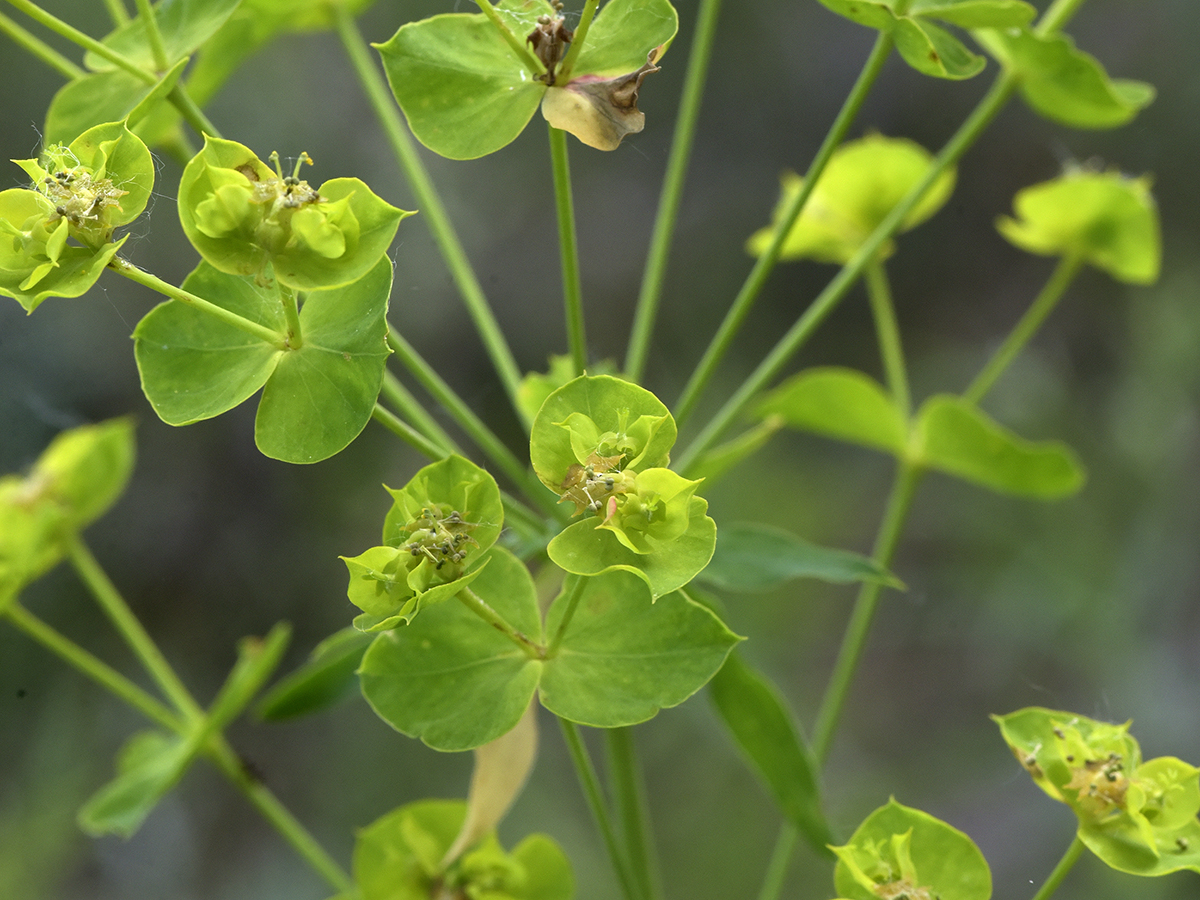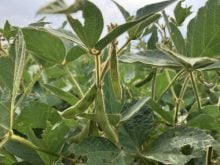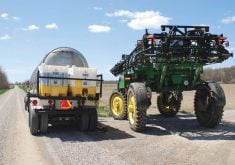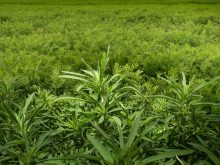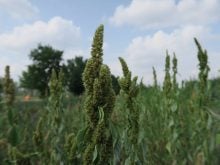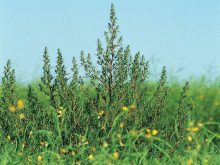REGINA — An integrated approach to controlling leafy spurge may include fertilizer, according to recent research.
Sheila Taillon, a Saskatchewan range management extension specialist, conducted a two-year experiment as part of her master’s studies.
A PhD student is now continuing the five-year study on how fertilizer could increase parasitism of arbuscular mycorrizal fungi to control the invasive spurge in native grassland.
Read Also

VIDEO: What tech makes your combine tick during harvest season?
Greg Berg with Glacier FarmMedia speaks with product specialists with Case IH, New Holland and John Deere about harvest technology features on their combines at Canada’s Outdoor Farm Show.
Taillon told a recent webinar that leafy spurge is highly dependent on AMF, which are soil micro-organisms that form on plant roots and help plants increase nutrient uptake. In return, the spurge plants share their fats and sugars.
She said this relationship is beneficial to leafy spurge because it improves growth, helps produce seed and provides drought and pathogen protection.
Leafy spurge has invaded millions of acres and caused both ecological and economic damage by reducing the number of species available to grazing animals. It out-competes native grasses for light, water, nutrients and space, growing up to one metre tall.
It is typically found in sandier soil and mainly in grasslands but also riparian and shrubby areas. It is rarely found in crop land.
“It doesn’t particularly care for that annual cultivation,” Taillon said.
However, it is hard to control because, similar to dandelions, it contains a milky white latex that isn’t palatable to most cattle. Sheep and goats graze it, and leafy spurge beetles are also used to control it.
“That’s problem number one. If it’s not being grazed, then it just keeps growing,” Taillon said.
“Problem number two is that it produces an abundance of seeds. But the thing that makes leafy spurge so challenging to control is its deep rhizomatous, or spreading, root system.”
The roots can reach three metres deep and spread five metres each year; fragments smaller than 2.5 centimetres in size can regenerate.
Taillon said herbicides can be effective, but there are only a limited number available for use on grassland.
She said previous studies found AMF can become parasitic in nutrient-rich soil, taking resources from the spurge plants. It’s where the idea of using fertilizer to create that environment and increase parasitism emerged.
Her work looked at the use of 2,4-D ester, a non-residual herbicide, as well as residuals Navius Flex and Tordon 22K, and applications of nitrogen, phosphorous, micronutrients and combinations of the three.
The full experiment included 360 plots on four native prairie sites all invaded by leafy spurge. They were in the dark brown and black soil zones at St. Denis, North Battleford, the Manitou pasture south of Marsden and Grenfell.
The herbicides were applied in 2022, while the fertilizers were applied in 2022 and 2023.
“What we found was that the residual herbicides controlled the leafy spurge so well that it was challenging to see how the effects of the fertilizer were working,” said Taillon.
In addition to spurge control, the study looked at forage quantity and quality and species richness.
Taillon posed several hypotheses:
- That phosphorous and and micronutrients would reverse the AMF relationship from beneficial to parasitic, especially when combined with herbicide.
- That the applications of herbicides and fertilizers would increase grass growth and forage quality.
- That loss of plant species would be minimized using the non-residual herbicide but potentially increased using fertilizer.
Her study found 2,4-D provided moderate control while Navius and Tordon provided multi-year control in both types of soils.
The nitrogen and micronutrient combination, rather than phosphorous and micronutrients as hypothesized, reduced the leafy spurge compared to other treatments but not necessarily to the control.
Taillon said fertilizer effects were significant at the plot level of three-by-three metres but not at smaller levels.
‘We may be able to enhance control of leafy spurge using fertilizers, though further research is needed,” she said.
All three herbicides contributed to increased grass biomass compared to the control, which Taillon said was likely an indirect result through reduced competition from spurge rather than direct use of herbicides.
Biomass increased with the fertilizer treatments, and forage showed increases in protein.
To no one’s surprise, the use of herbicides, particularly Tordon, decreased the number of species; there was no effect from fertilizer. Taillon said using 2,4-D could provide openings for other species in the first year.
“We found limited support for use of fertilizers for controlling leafy spurge,” she said.
“At the plot level we saw significance with the nitrogen and micronutrient treatments, suggesting that it may be possible to use fertilizer to enhance control of leafy spurge.”
Further research is needed to determine how rich the soil nutrients need to be to flip the AMF association from positive to negative, she said.
Taillon also said the use of tools will depend on land management goals and environmental considerations. Conservation goals may differ from livestock production goals, she added.


